Have Camera, Will Travel, With Due Diligence.
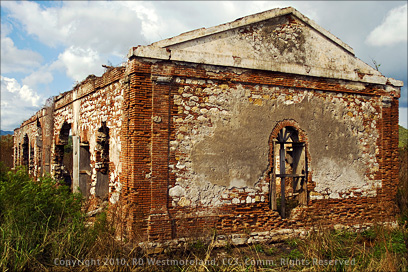 This Post is for all you photographers out there. Pro or not.
This Post is for all you photographers out there. Pro or not.
The photo opportunities on the isle of Puerto Rico are ripe and all around, no matter what time of the year you visit. In fact, vegetation is at its best during the summer and fall, not the winter months when most folks want to come here. My first visit was in late August/early September. It was beautiful then, very lush and green. The Flamboyans were in full bloom and covered the countryside.. 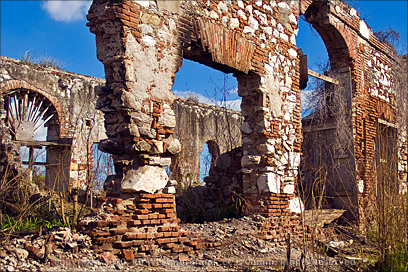 now its early March and things look a little shabby. Some plants are showing early buds.. especially the Mango and Lemon trees. This is considered the Dry Season, though we have had a fair amount of rain. You cannot second-guess when it will rain in PR. But I see that as an opportunity as well. It is part of the Tropics.
now its early March and things look a little shabby. Some plants are showing early buds.. especially the Mango and Lemon trees. This is considered the Dry Season, though we have had a fair amount of rain. You cannot second-guess when it will rain in PR. But I see that as an opportunity as well. It is part of the Tropics.
Fine Art images, those suitable for large display prints can be had almost anywhere. Subjects like old dilapidated brick buildings lay in ruin all over PR. 500 years of Spanish and American history can be seen in the rubble.  Or the raw jungle, if you can hack your way through it. From my back door in Coamo, it looks just like something out of an ‘Indiana Jones’ movie.
Or the raw jungle, if you can hack your way through it. From my back door in Coamo, it looks just like something out of an ‘Indiana Jones’ movie.
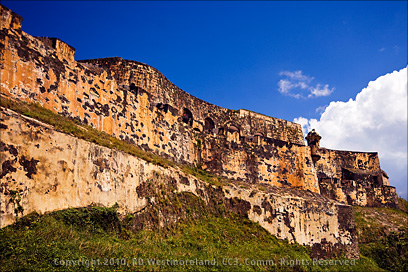 I expect natives with blow guns to pop out of the undergrowth at any moment.
I expect natives with blow guns to pop out of the undergrowth at any moment.
OK.. not really, those natives would not be native to PR, but you get the idea.
PR IS an EcoTourist hot spot. The whole island is. Its easy to explore on your own or join a tour group. Most are run out of San Juan and will pick you up at your hotel. That’s how I saw El Yunque the first time and I’m glad I did.
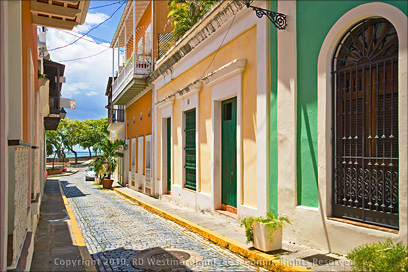 Urban images of graffiti and street-life can be had all over San Juan, if you are careful and vigilant. Especially in the main tourist spots where cops patrol 24/7. The Tren Urbano Transit System was covered in a previous post. It will take you through the heart of greater San Juan. Traveling by yourself (like I did) would be a bad idea in the cramped inner cities of San Juan, Mayaguez and Ponce. Freelance photojournalists would feel quite comfortable shooting here. Speaking Spanish would go a long ways and I’m working on it. Another travel tip: Never open up and study a map in a public place.
Urban images of graffiti and street-life can be had all over San Juan, if you are careful and vigilant. Especially in the main tourist spots where cops patrol 24/7. The Tren Urbano Transit System was covered in a previous post. It will take you through the heart of greater San Juan. Traveling by yourself (like I did) would be a bad idea in the cramped inner cities of San Juan, Mayaguez and Ponce. Freelance photojournalists would feel quite comfortable shooting here. Speaking Spanish would go a long ways and I’m working on it. Another travel tip: Never open up and study a map in a public place.
Nothing sez “I’m a Tourist, Come Rob Me” more than someone mulling over a map. This tags you as a potential ‘mark’.
You do have your trusty GPS unit or iPhone /SmartPhone with you, right?
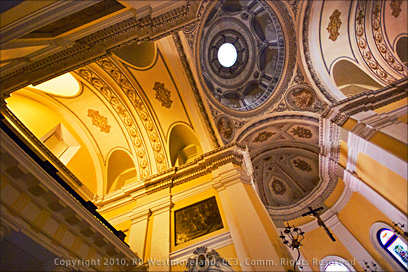 I go out of my way to blend in when I shoot. I dress like the locals, travel light and only carry a small amount of cash on me. No brand new shirts or fresh pressed pants. Yes, I still stand out with an D/SLR stuck to my face. Then there is the long hair issue.. it don’t fit in by local standards, but makes them stop and wonder about me.. “he don’t look like the typical tourist… hmmm?” I have a routine where every so often, I stop, look around and assess my surroundings. Especially things just outside my normal view. Thieves like to study their potential ‘marks’ at a distance. If this scares you, then you need to stay with the big tour groups. I hate traveling that way so I have adopted behavior that has served me well over the years.
I go out of my way to blend in when I shoot. I dress like the locals, travel light and only carry a small amount of cash on me. No brand new shirts or fresh pressed pants. Yes, I still stand out with an D/SLR stuck to my face. Then there is the long hair issue.. it don’t fit in by local standards, but makes them stop and wonder about me.. “he don’t look like the typical tourist… hmmm?” I have a routine where every so often, I stop, look around and assess my surroundings. Especially things just outside my normal view. Thieves like to study their potential ‘marks’ at a distance. If this scares you, then you need to stay with the big tour groups. I hate traveling that way so I have adopted behavior that has served me well over the years.
 I always carry and shoot from a monopod (one third of a tripod?)… its an intimidating thing when open. Besides, it eliminates camera shake completely. An issue for amateurs, even when using DigiCams with image-stabilization.
I always carry and shoot from a monopod (one third of a tripod?)… its an intimidating thing when open. Besides, it eliminates camera shake completely. An issue for amateurs, even when using DigiCams with image-stabilization.
I only drag out the tripod for time exposures, time-lapse images and bracketed HDR shots.
Again, most thieves look for the easy ‘snatch and grab’ opportunities. They very seldom confront you directly.
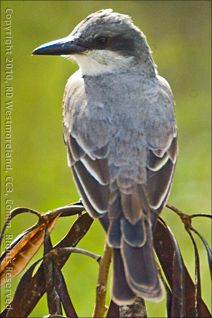 Your car and anything in it, is far more likely to get hit so park only in open, high traffic, public areas. Never leave anything of value where it can be seen through the window. Rental cars with stickers on them are at particularly high risk.
Your car and anything in it, is far more likely to get hit so park only in open, high traffic, public areas. Never leave anything of value where it can be seen through the window. Rental cars with stickers on them are at particularly high risk.
I always pause and look around before getting out of or into my car.
Subjects that’s have proved to be quite elusive are birds, butterflies, coquis (a little brown tree frog) and critters in general. You can hear the birds and coquis chirping away, but they are well hidden. You can see ‘birds of prey’ circling high over head, but seldom come down into shooting range.
Butterflies almost never stand still long enough to shoot. My best bird shots were at the only zoo on the island, in Mayaguez. If you intend to photograph birds in the wild, you will need a longish lens. I will be scoring a long zoom down the road, just for these subjects.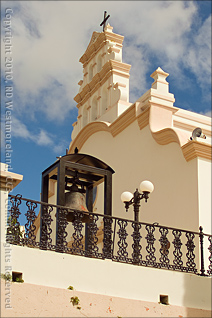 My 600mm F8 solid-cat mirror lens will suffice for now, but a zoom lens around 100mm to 400mm would be perfect (for a 35mm full frame sensor). Lizards on the other hand are an easy subject and come in many shapes and sizes. A lot of the local critters are nocturnal so the odds of running across them are very low. I’ve seen bats at night flit by, but I doubt I’ll ever get a shot of them.
My 600mm F8 solid-cat mirror lens will suffice for now, but a zoom lens around 100mm to 400mm would be perfect (for a 35mm full frame sensor). Lizards on the other hand are an easy subject and come in many shapes and sizes. A lot of the local critters are nocturnal so the odds of running across them are very low. I’ve seen bats at night flit by, but I doubt I’ll ever get a shot of them.
The sunsets with palms.. the clear black nights with tons of stars.. the sunrises and morning fog… plants literally dripping with dew. All great subject matter and waiting for you to shoot.
I have many more places to visit and report on, that’s for sure. There are several botanical gardens to check out as well as the cave systems on the North West end of PR. All in time… Arrg!
Paul says
I must admit, I was very pleased with the photo opportunities I encountered during my recent two week stay. And I was really pretty lazy since I was doing a lot of socializing as well. Can’t get PR out of my head. It was my first visit at the urging of a close friend. Amazing! Enjoyed it more than Hawaii! Link to gallery at
http://spaulsahm.photoshelter.com/gallery/Puerto-Rico/G0000bG_94CSEb6U/C0000JBxnudPH3CI
Paul
Joe Smalanskas says
Back in the early ’60s I met a Gonzales-Padin from PR… He was a member of a Wilkes Barre College Rifle Team competing at the Coast Guard Academy in New London Conn… I believe his mother was from Wilkes Barre… Anyway, I would be sure pleased to meet him again… (S.Dog- maybe someone can help with that.)